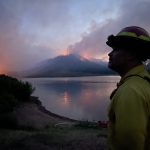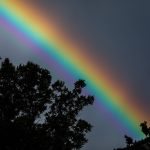Light pollution spreading in mountains

ALL |
SUMMIT COUNTY – An increasing glow in the night sky over Summit County is visible from the Mt. Evans Observatory, where sky watchers say the light pollution is interfering with their work.”We fled to Mt. Evans to escape the glow, and now it’s followed us,” says the University of Denver’s Dr. Robert Stencel, director of the observatory. “The fact that we can see the glow means you’re not being conscientious with your lights.”One of the observatory’s missions is to track near-earth asteroids, those pesky pieces of interplanetary debris that have the bad habit of colliding with our planet.
In some cases, notably about 65 million years ago, such collisions have resulted in global devastation and the extinction of most earthly life forms. The scientists who work on top of the fourteener also monitor what they call long-period variable stars, which helps them uncover the origins of the universe.According to Stencel, Summit County’s contribution to the general level of light pollution is relatively small, but has grown measurably in the past 10 to 15 years. Stencel is currently making some calculations to quantify the change.Preceding those government talks, a group of local astronomy enthusiasts has held a public star gazing party on the Frisco Peninsula, Friday. Silverthorne resident Gary Schaecher, one of the coordinators, said the purpose was to educate High Country residents about light pollution.
“I was saddened to learn that observatory on Mt. Evans, which is run by Denver University, has noticed a sharp decline in the sky’s darkness to the west from Summit County,” Silverthorne resident Gary Schaecher wrote in a recent e-mail. “Many progressive communities have been passing lighting regulations to curb the loss of night skies. Many kids growing up in Denver today don’t have a clue what a constellation is because most of the skies are blotted out by excessive lighting.”Along with interfering with nighttime views of the sky, light pollution has more down-to-earth impacts, as well, Stencel said. Badly aimed lights and poorly designed lighting systems lead to glare and even “light trespass,” Stencel says. Health impacts can include loss of sleep and subsequent stress, he adds.
Said Aaron Reid, a member of the Western Colorado Astronomy Club: “Twenty years ago, you used to be able to see the Milky Way from downtown Grand Junction, but not any more.Vail Colorado










